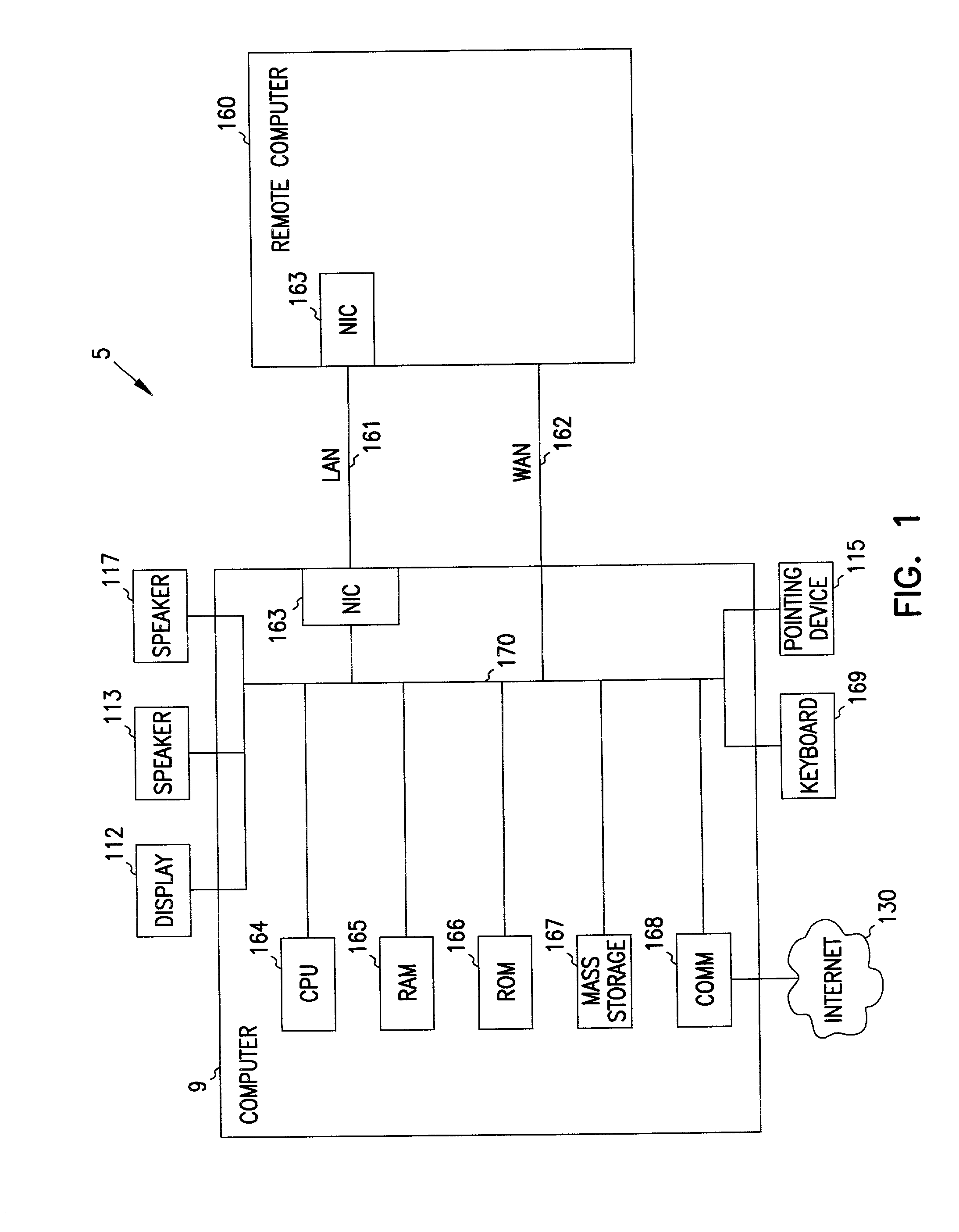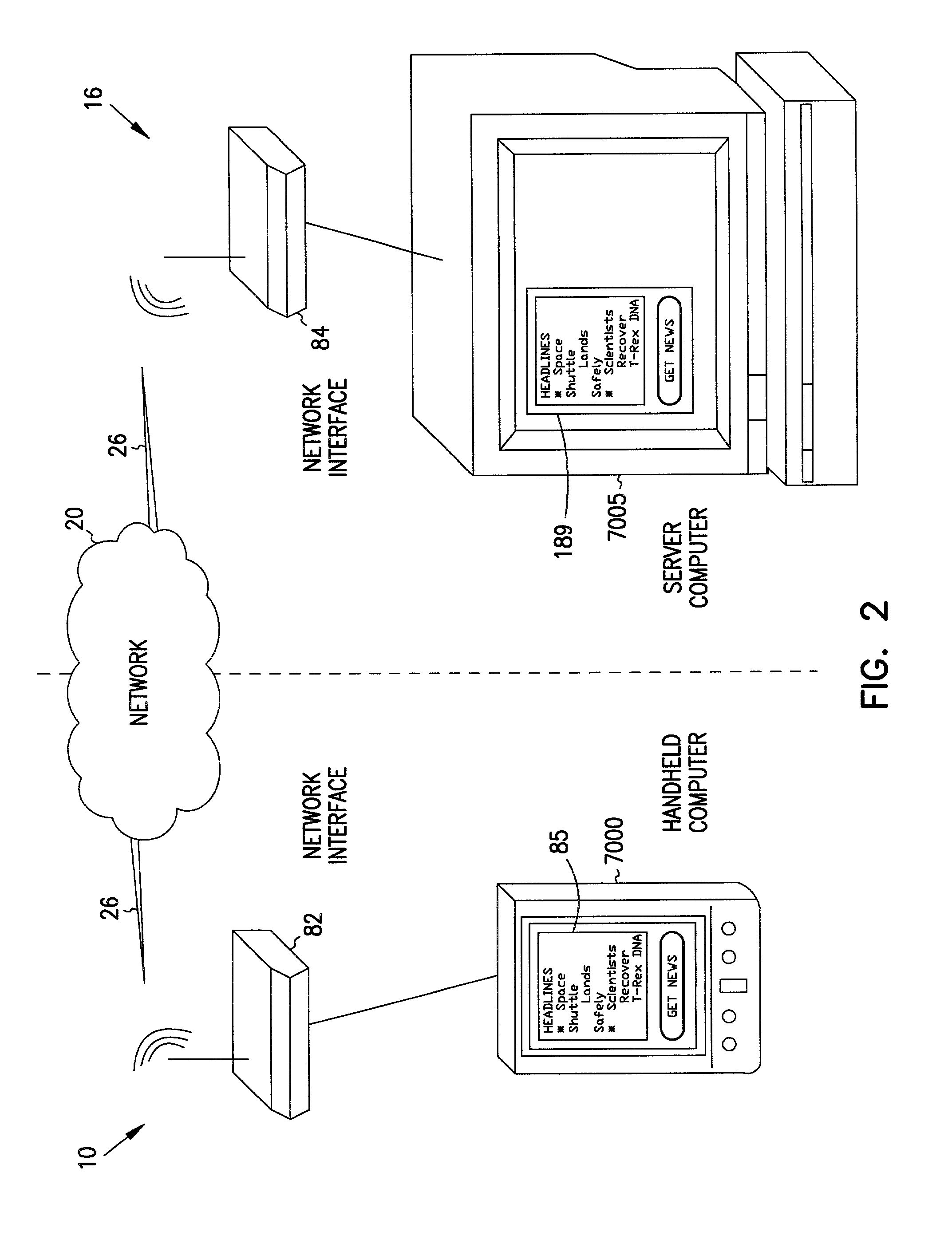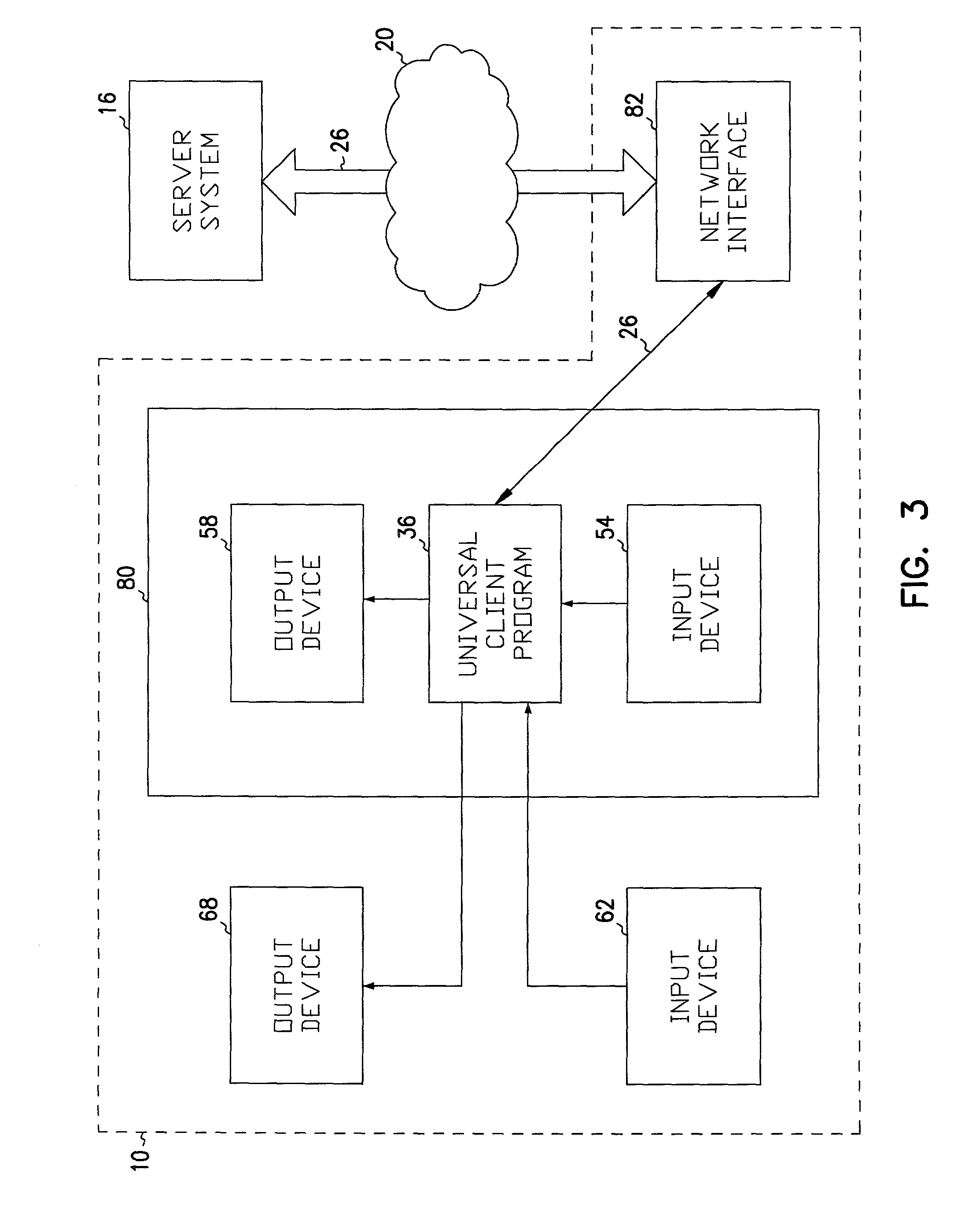Shortcomings of this approach include: 1)
virtual machine software is complex and costly to implement on devices with
limited resources; 2) the Presentation Engine component is downloaded as a whole, and therefore may contain a significant amount of unneeded code for aspects of
user interface presentation unused during a session; and 3) the task of developing a Presentation Engine component is an additional
programming burden placed on developers of client / server applications.
This method does not teach how to minimize resource requirements on the client, nor does this method teach how to minimize the network bandwidth required to support a client / server session.
Furthermore, this method does not teach how
dynamic user interface presentations, obtaining from unanticipated user requests or unanticipated
data availability, are enabled using a statically defined Presentation Engine.
Shortcomings of this approach include: 1)
virtual machine software is complex and costly to implement on devices with
limited resources; 2) the Presentation Engine component is downloaded as a whole, and therefore may contain a significant amount of unneeded code for aspects of
user interface presentation unused during a session; and 3) the task of developing a Presentation Engine component is an additional
programming burden placed on developers of client / server applications.
This method does not teach how to minimize resource requirements on the client, nor does this method teach how to minimize the network bandwidth required to support a client / server session.
Furthermore, this method does not teach how
dynamic user interface presentations, obtaining from unanticipated user requests or unanticipated
data availability, are enabled using a statically defined Presentation Engine.
Shortcomings with this approach include: 1)
virtual machine software is complex and costly to implement on devices with
limited resources; 2) the Presentation Engine component is downloaded as a whole, and therefore may contain a significant amount of unneeded code for aspects of
user interface presentation which are unused during a session; and 3) the task of developing a Presentation Engine component is an additional
programming burden placed on developers of client / server applications.
This method does not teach how to minimize resource requirements on the client, nor does this method teach how to minimize the network bandwidth required to support a client / server session.
Furthermore, this method does not teach how
dynamic user interface presentations, obtaining from unanticipated user requests or unanticipated
data availability, are enabled using a statically defined Presentation Engine.
Shortcomings of this approach include: 1) virtual
machine software is complex and costly to implement on devices with limited resources; 2) there are significant performance issues resulting from a script written in GUIScript being interpreted by a GUIScript
interpreter running on virtual
machine software which in turn runs on native hardware; each additional interpretation / execution layer results in reduced overall performance, and increased local resource usage; 3) a GUIScript script component is downloaded as a whole, and therefore may contain a significant amount of unneeded code for aspects of user interface presentation unused during a session; 4) the task of learning a new, non-standard
scripting language is an additional burden placed on developers of client / server applications; and 5) creating a GUIScript
interpreter component is an additional burden placed on developers of client / server application systems.
This method does not teach how to minimize resource requirements on the client, nor does method teach how to minimize the network bandwidth required to support a client / server session.
Shortcomings of this approach include: 1) virtual
machine software is complex and costly to implement on devices with limited resources; 2) there are significant performance issues resulting from a script written in GUIScript being interpreted by a GUIScript
interpreter running on virtual machine software which in turn runs on native hardware; each additional interpretation / execution layer results in reduced overall performance, and increased local resource usage; 3) a GUIScript script component is downloaded as a whole, and therefore may contain a significant amount of unneeded code for aspects of user interface presentation unused during a session; 4) the task of learning non-standard
scripting language is an additional burden placed on developers of client / server applications; and 5) creating a GUIScript interpreter component is an additional burden placed on developers of client / server application systems.
This method does not teach how to minimize resource requirements on the client, nor does this method teach how to minimize the network bandwidth required to support a client / server session.
Since the dedicated
data set is static, and dynamic downloading of new programs and data sets is not efficient, additional data is generally inaccessible.
Raw GPS information, while useful in determining the geographic location of a client, is of limited additional value.
However, the handheld devices, to which such information is preferably delivered, suffer from limitations in computing power and storage capacity relative to fixed computing resources.
Present-day portable devices do not typically combine graphical interfaces with access to large databases, fast
processing speeds, or information customized in response to a user's dynamic or environmental needs.
However, a shortcoming of the '721 patent is that it does not allow the user to query a plurality of databases and interact iteratively with a plurality of systems.
This is important because the bandwidth provided by
early generation networks 20 is limited and costly, and because bandwidth unconsumed by protocol is available for application content.
 Login to View More
Login to View More  Login to View More
Login to View More 


